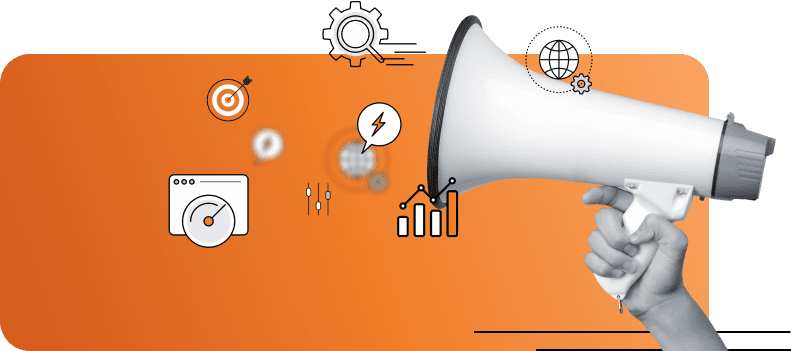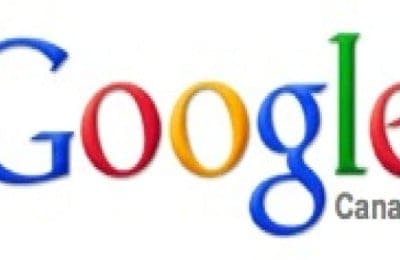Google Images is a great way to get your business in front of potential customers. With more than 3 billion searches per day on Google, ranking high on the search engine can result in a lot of website traffic. In this blog post, we will discuss some SEO best practices for Google Images that will help your business rank higher and attract more visitors!
Many businesses may not realize the importance of focusing on your Google images rankings. So we have put together a list of what to focus on, how to get your Google Images to rank higher, and what tools to use to rank 1st on Google.
1. When using Google Images for SEO, always use the “Search by image” feature
The “Search by image” feature is a great way to improve your SEO for Google Images. This feature allows you to enter an image URL or upload an image file to see where it appears on the web. You can also use this feature to find similar images and reverse image search results. To use the “Search by image” feature, follow these steps:
- Go to images.google.com and click on the “Search by image” button
- Enter the URL of the image or upload the image file
- Click on the “Search” button
- View the results and analyze them for your business
By using the “Search by image” feature, you can see where your images appear on the web and find out which websites are linking to them. This information can help you improve your SEO for Google Images.
In addition to using the “Search by image” feature, there are other SEO best practices that businesses can use to rank high on Google Images.
Keywords
When optimizing your images for SEO, always use relevant keywords. Keywords are the words or phrases that people enter into the search engine when they are looking for something. By including relevant keywords in your image file name and alt text, you can improve your chances of ranking high in the search results.
Why Take Advantage Of Alt Text
Adding alt text to your Google images is a great way to increase traffic to your website. Not only will this help you get noticed by Google, but adding keyword-rich alt texts will also help improve your SEO ranking.
Adding alt text is a very easy process. Simply follow these steps:
- Open the image you want to add alt text to in your browser.
- Right-click on the image and select “Open Image in New Tab.”
- Copy the URL of the new tab and paste it into your SEO tool of choice.
- Add your desired keywords as the alt text and hit “save.”
You can also add alt text within Google’s image search. Simply click on the “What’s this?” button under any image and enter your desired keywords in the “alt text” field.
Adding alt text to your images is a great way to improve your SEO ranking and increase traffic to your website.
Why Take Advantage Of File Names
Adding keywords to image file names is a technique that can be used to increase traffic to your website. When someone performs a search engine query, the search engine will return results that contain the keywords that were used in the search. If your website’s images are named using relevant keywords, then your website will appear in the search engine results for those keywords.
There are several ways to add keywords to your image file names. The easiest way is to use a keyword-based naming system that is provided by your image hosting service. Most of the major image hosting services offer a keyword-based naming system that will automatically name your images using relevant keywords.
If you are not using a keyword-based naming system, then you will need to name your images manually. When naming your images, be sure to use relevant keywords that accurately describe the content of the image. For example, if you are uploading a picture of a dog, you might want to name the image “dog.jpg” or “black-labrador-retriever.jpg”.
When using keywords in your image file names, be sure to use a mix of primary and secondary keywords. For example, if you are uploading a picture of a black Labrador retriever, you might want to use the following keywords: “black labrador retriever”, “labrador retriever”, “dog,” and “pet”.
High Quality
It is also important to make sure that your images are of high quality. Google prefers images that are clear and sharp. When selecting images for your website, choose images that are at least 800 pixels wide and have a resolution of 72 dpi or higher.
Finally, make sure to compress your image files before uploading them to your website. Image compression will reduce the file size of your image without reducing the quality. This will help your pages load faster, which is important for both SEO and user experience.
By following these SEO best practices for Google Images, you can improve your chances of ranking high in the search results and attracting more visitors to your website.
Make sure your images are properly tagged with keywords and descriptions
It is important to properly tag your images with keywords and descriptions so that your business can be easily found online. If people are searching for images of your products or services, you want them to be able to find your images quickly and easily. Tagging your images with the right keywords and descriptions will help you to reach a wider audience and boost your visibility online.
When you are tagging your images, there are a few things to keep in mind.
- First, make sure that your tags are relevant to the image. Don’t use irrelevant keywords just to get more views – this will only result in people leaving your site quickly. Instead, focus on using keywords that accurately describe what is in the image.
- Second, use a variety of keywords. Don’t just use the same keyword over and over again. This will make your site seem repetitive and boring, and people will be less likely to stay on your site for long. Instead, mix things up and use a variety of different keywords so that people can find what they’re looking for more easily.
- Third, don’t forget to use keywords in your descriptions as well. Your descriptions should be interesting and informative, but they should also include some of the keywords that you used in your tags. This will help to ensure that people can find your images when they search for them online.
By following these tips, you can make sure that your images are properly tagged and that your business is easily found online. With the right keywords and descriptions, you can reach a wider audience and boost your visibility online.
Tools You Can Use
There are many free tools that businesses can use to tag their images with keywords and descriptions. These tools will help you improve your SEO for Google Images and rank higher in the search results.
Some of the best free tools for tagging images with keywords and descriptions include:
- Google Image Labeler: Google Image Labeler is a free tool that allows businesses to tag their images with keywords and labels.
- Google Photos: Google Photos is another free tool that businesses can use to tag their images with keywords and descriptions.
- Flickr: Flickr is a popular online photo-sharing site that also allows businesses to tag their images with keywords and descriptions.
- iPhoto: iPhoto is a program that is installed on all Apple computers. This program allows businesses to tag their images with keywords and descriptions.
Should You Still Do Keyword Research For Your Images?
When you’re creating descriptions for your Google Images, it’s important to do keyword research to make sure you’re targeting the right keywords. This will help ensure that your images show up in search results for relevant queries.
One way to find keywords is to use the Google AdWords Keyword Planner. This tool lets you research keyword ideas and gets information on how often they’re being searched for. You can also use it to get estimates on how difficult it will be to rank your images for those keywords.
Check out our other blog, “37 Free Tools To Use To Make Your Website Stand Out In A Sea Of Competitors,” where we provide a list of tools that help with finding the right keywords.
When you’re done, your Google Images descriptions should be full of relevant, targeted keywords that will help you get more traffic from search engines. And, of course, make sure to use them in the right places – in your titles and file names, for example.
3. Use captions to add more information about your images
Adding captions to your images can help get your business more traffic. Captions provide more information about what is happening in the photo and can help to explain the purpose of the image. This extra information can be helpful for potential customers who are looking at your photos and can help to convince them to visit your business. Additionally, adding captions to your images can help improve your search engine optimization (SEO). By including keywords in your captions, you can help your photos show up when people are searching for those terms.
If you want to add captions to your images, there are a few things you need to do.
- First, make sure that you have high-quality images. Blurry or low-resolution photos are not going to look good with captions, so it’s important to make sure that your photos are top-notch.
- Second, choose interesting and eye-catching photos. People are more likely to read the caption if they’re interested in the photo itself.
- Finally, write catchy and informative captions. The caption should be short and to the point, but it should also give the reader a good idea of what the photo is about.
4. Link to your images from other web pages on your site
One of the main reasons why it’s important to link other web pages on your site to Google images is because it can help improve your website’s search engine ranking. When you include an image on your website, be sure to include relevant keywords in the file name and the alternate text field. You can also help improve your website’s search engine ranking by adding an image to your website’s sitemap.
If you want to ensure that your website’s images are always accessible, it’s a good idea to link to them from other pages on your site. This way, if someone links to one of your images directly, they’ll be taken to the page on your site where that image is located. Additionally, linking to your images from other pages on your site will ensure that the images are cached by search engines.
There are a few ways you can link to your website’s images. The most common way is to use an anchor tag. An anchor tag is an HTML element that creates a hyperlink. To create a hyperlink to an image, you simply need to add the “src” attribute to the anchor tag and specify the location of the image. Here’s an example:
<a href=”images/image.jpg”>Image</a>
In this example, we’re linking to an image located in the “images” folder on our website.
Another way to link to your website’s images is to use an image tag. An image tag is an HTML element that’s used to display images on a web page. To add an image tag, you simply need to add the “src” attribute and specify the location of the image. Here’s an example:
<img src=”images/image.jpg”>
In this example, we’re displaying an image that’s located in the “images” folder on our website. We could also display an image that’s located on a different website by specifying the web address in the “src” attribute.
What Happens If You Don’t Put A Link?
If you don’t put a link to your images from other web pages on your site, you will rank low on google.
One of the easiest ways to make sure your images are found by search engines is to put links to them from other web pages on your site. This tells Google and other search engines that the images are important and helps them rank your images higher in search results.
5. Add an “Image Credits” section at the end of your blog post with links to the websites where you found your images
Adding an “image credit” to your blog post is a common courtesy that is often frowned upon if not done. When you use someone else’s image without giving them credit, you are taking their work without permission and using it for your own benefit. This can be seen as stealing, which is unethical and unacceptable.
When you use someone else’s image, it is important to give them credit. This can be done by adding a line of text that says “photo credit: name of the photographer” beneath the image. If you are not sure who took the photo, you can also add “photo courtesy of Google Images.”
When adding an image credit, make sure to include the following information:
- The name of the photographer or source
- The website where the image was found
- The date the image was taken or published
By adding an image credit, you are not only being respectful to the person who took the photo, but you are also ensuring that anyone who sees your blog post knows where they can find the original image.
Nervous About Copyright Restrictions?
One website that you can use to find images for your blog posts is unsplash.com. This website has a library of high-quality, royalty-free images that you can use without having to worry about copyright restrictions.
Another great resource for finding images is Pixabay. This website has a library of over 1 million free, royalty-free images that you can use without having to worry about copyright restrictions.
If you’re looking for photos that you can use commercially, then Shutterstock is a good option. Shutterstock has a library of over 250 million high-quality photos, illustrations, and videos that you can use in your blog posts and other marketing materials.
When you’re looking for images to use in your blog posts, it’s important to make sure that you’re using images that are high-quality and relevant to your topic. If you’re not sure where to find images that meet these criteria, then unsplash.com and Pixabay are good places to start.
As Google Images continues to grow in popularity, businesses must start thinking seriously about using it as part of their SEO strategy. Not only is Google Images a great way to find images for your website, but it can also help you rank higher on search engine results pages.
To get the most out of Google Images for your SEO strategy, you first need to understand how it works. Google Images uses a variety of factors to rank images, including the image’s title, description, and filename. You can also help improve your ranking by adding keywords to your images.
Another thing to keep in mind is that Google Images doesn’t always show the latest results. If you’re not seeing the results you expect, try refreshing the page.
Google Images is a great way to find images for your website, but it can also help you rank higher on search engine results pages. By adding keywords to your images and understanding how Google Images works, you can get the most out of this powerful tool.
Google Penalties
When you want to use an image from Google Images for your website, blog, or article, you need to make sure that you have the right to use it. If you don’t, you could face some penalties.
First of all, if you’re using a copyrighted image, you could face a legal penalty. This means that you could be sued by the copyright holder for using their image without permission.
Even if you’re not using a copyrighted image, you could still face a penalty from Google. If they determine that you’re using an image illegally, they may remove your website from their search engine results or even ban it altogether.
So, before you use an image from Google Images, make sure you have the right to use it. Otherwise, you could face some serious consequences.
Check Out The Competitors
As an e-commerce business, using Google Images can be an important part of your SEO strategy. When you upload images to your site, be sure to include keywords in the file names and alt text. You can also use Google Images to find high-quality images to use on your site. Just enter the keyword or phrase you’re interested in and click the search button.
Google Images can also be used to research your competition. When you enter a competitor’s website URL into the Google Images search box, you’ll see all of the images on their website. This can give you ideas for your site design and help you find high-quality images to use on your pages.
So, what are you waiting for? Start optimizing your images for Google Images today and watch your website traffic skyrocket! Do you have any questions about how to get started? Feel free to reach out to us for help. We’re always happy to offer our expert advice. Thanks for reading!









